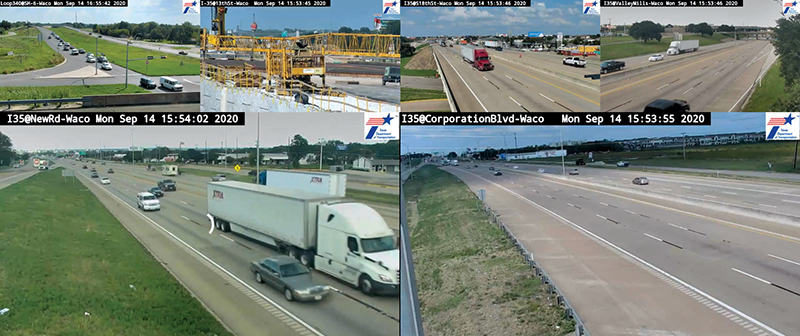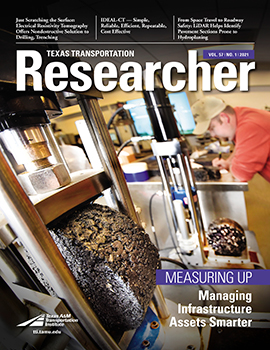In 2008, the Texas Department of Transportation (TxDOT) began its massive My35 Reconstruction Project to improve mobility and safety along 100 miles of I-35 in Central Texas. While most of the project is complete, Project 4B in Waco is currently underway, providing travelers improved traffic control, updated access roads and better interstate access locally.

Since the project’s inception, the Texas A&M Transportation Institute (TTI) has provided TxDOT with work zone and traveler information innovations. A significant contribution is TTI’s development of a first-of-its-kind traveler information system to keep motorists informed about I-35 traffic. Travel times, construction delay, lane closures, and the impacts of pedestrian and bicycle closures are communicated via a website, dynamic message signs, email, social media and real-time video feeds.
“The cameras are particularly helpful since they show what’s actually happening on the roadway in real time,” TTI Senior Research Scientist Leonard Ruback says. “All you have to do is look at the 4B traffic map or YouTube streams before you begin your trip.”
While the cameras were initially intended to help motorists navigate the corridor, it turns out other groups also find them useful. Besides being a major route for local and through travel on I-35, the Project 4B area is also vital for emergency service providers. And if anyone needs real-time information about travel conditions in this busy corridor, it’s first responders. That’s why the TxDOT Waco District’s I-35 Waco Project 4B team is working with McLennan County Emergency Services to help emergency responders.
The 22 streaming video cameras in the 4B project have proven particularly helpful to the Waco Fire Department (WFD) in planning its response routes when emergency calls come in. By viewing roadway conditions before they roll, WFD personnel can identify and avoid potential choke points. To help make the cameras more useful to WFD, TTI designed a portal for the department to streamline its access to video feeds throughout the project area.
“In emergency situations, even a few minutes can be crucial to delivering lifesaving care,” says WFD Deputy Chief Robert Beechner. “The cameras have been tremendously helpful in getting our emergency responders to incidents as quickly as possible.”
